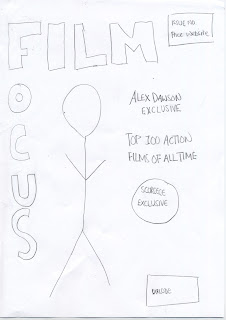Empire is a film magazine that was first published in 1989, in the UK, it is aimed at an audience of 15 to 24. They mainly focus on blockbuster, hollywood films. However, it does look at independent and art-house productions. It is the biggest selling magazine in Britain, releasing publications monthly.
Total film is a British film magazine published 13 times a year (every four weeks) by Future Publishing. Doing features on film, DVD, Blu-Ray, news and reviews; the magazine launched in 1997. It is the second-best selling magazine in the UK behind Empire. It caters for a 15-24 demographic, mianly focusing on mainstream, blockbuster films.
American Cinematographer focuses on the art and craft of conematography, going behind the scenes on domestic and international productions. The American Society of Cinematographers publish the magaizne which is released monthly. The magazine was started in 1920 and features in-depth interviews with cinematographers, directors and some of their key collaborators at every stage of production. It is aimed at a less mainstream, older demographic.
Premiere was an American, New-York based film magazine that stopped issuing copies in April 2007. The monthky magazine was first published in 1987. It has a demographic of 15-24, focusing mainly on mainstream films.
Neon was a British film magazine published monthly by Emap Consumer Media from December 1996 to February 1999. It was released monthly and mainly focussed on mainstream cinema, it was seen a a refreshing alternative to best-seller Empire.
Covering international film business, screen international is a popular UK magazine mainly aimed at a more niche market. The magazine is primarily aimed at those involved in the global movie business. The weekly magazine in its current form was founded in 1976.
Sight & Sound was first published in 1932. The Magazine reviews all film releases each month, including those with a limited release, as opposed to most film magazines which concentrate on those film with a general release. Sight & Sound features a full cast and crew credity list for each reviewed film.
British independent movie magazine that features writing, illustration and photography related to cinema. It is published by London-based creative agency. It is a bi-monthly magazine.
Escape was a landmark British comic strip magazine founded and edited by paul Gravett and Peter Stanbury. 19 issues were published between 1983 and 1989.












































